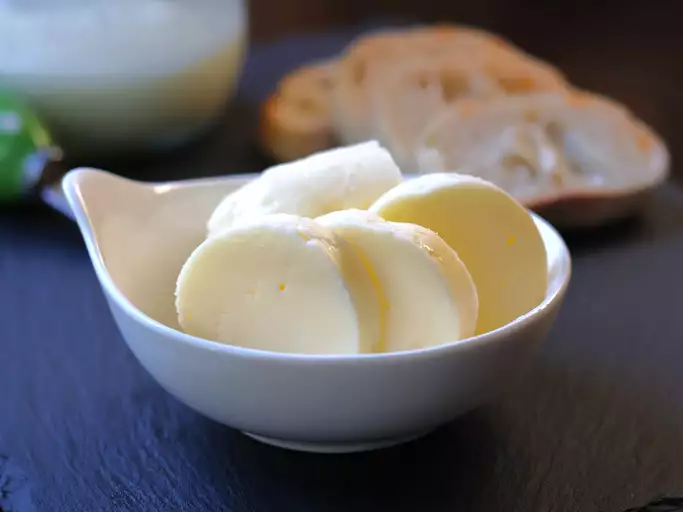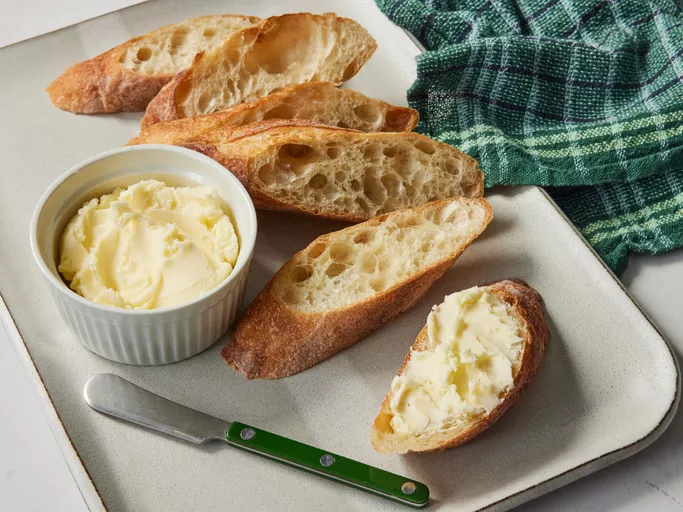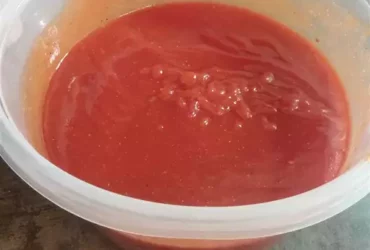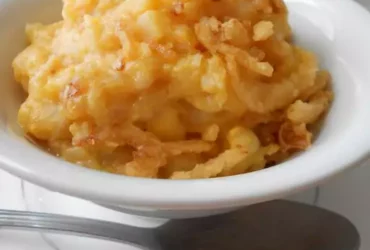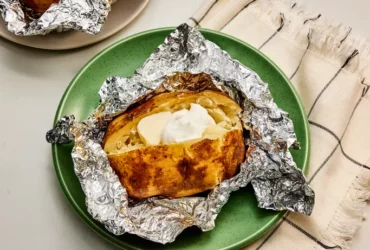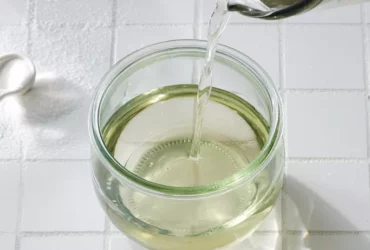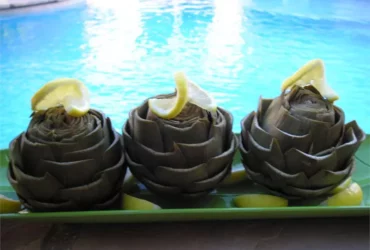Ingredients
Milk and Cream
To make homemade butter, you’ll need some basic ingredients, which are relatively simple to obtain and store.
Milk is a fundamental ingredient in making butter, as it contains fat that will separate and solidify into butter when churned properly.
There are several types of milk that can be used for making homemade butter:
- Cow’s milk
- Sheep’s milk
- Goat’s milk
- Buffalo milk
- Camel’s milk
The fat content of milk can vary depending on the type and quality of the milk, but generally:
- Cow’s milk has a fat content of around 3.5%
- Sheep’s milk has a fat content of around 7%
- Goat’s milk has a fat content of around 4-6%
- Buffalo milk has a fat content of around 8-10%
Cream is another essential ingredient in making homemade butter, as it contains more fat than whole milk and will churn faster to produce a higher-quality butter.
- Heavy cream
- Whipping cream
Note that you can also use buttermilk or clotted cream as an alternative to regular milk, but this will change the flavor and texture of your butter.
Crème fraîche or heavy cream (1 cup) is necessary for making butter, with crème fraîche containing a higher fat percentage than regular milk.
To make butter, you will need a specific type of dairy product that contains a high fat content. Two common options are crème fraîche and heavy cream, with heavy cream being the more traditional choice for making butter.
Heavy cream is made by skimming the thick, fatty top layer from cow’s milk. This process removes much of the water content in the milk, leaving behind a rich liquid that can be used to make butter. The fat content in heavy cream typically ranges from 35% to 40%, which is sufficient for making high-quality butter.
Crème fraîche, on the other hand, has an even higher fat percentage than regular heavy cream, usually ranging from 45% to 50%. This makes it an excellent choice for making butter. Crème fraîche also has a slightly tangy flavor and a thicker consistency, which can add a unique character to your homemade butter.
It’s worth noting that crème fraîche is often preferred by many home cooks and bakers because of its richer flavor profile and higher fat content. Additionally, using crème fraîche instead of heavy cream can result in a lighter and more spreadable butter.
Making the Butter
Whipping the Cream
- The process of making homemade butter begins with heavy cream, which should be chilled in the refrigerator overnight before use.
- Once the cream has been properly chilled, it’s time to begin the churning process using a stand mixer or handheld electric whisk.
- Add the cold cream to the mixing bowl and beat it on medium-high speed until you notice the cream start to thicken and form soft peaks.
- This initial stage should only take about 2-3 minutes, depending on the type of mixer you’re using.
- As you continue beating, you’ll begin to see the cream break down into whipped cream, which will eventually turn into a mixture that’s slightly grainy in texture.
- This is a sign that the butter is starting to form and separate from the buttermilk.
- Continue beating until the mixture has reached this stage, at which point you’ll start to see a clear separation between the butter and the liquid.
- To further refine the process, stop the mixer and scrape down any excess cream or butter from the sides of the bowl back into the mixture.
- The goal is to achieve a smooth, creamy consistency throughout, so make sure to scrape thoroughly before resuming the beating process.
- As you continue whipping, the butter will start to come together in large clumps and eventually form a solid mass that’s completely separated from the buttermilk.
- This may take anywhere from 5-10 minutes depending on your mixer and the quality of the cream.
- Once you’ve achieved this stage, stop the mixer immediately and take a look at the mixture in front of you.
- You should see a solid mass of butter surrounded by a clear liquid – this is buttermilk!
- The next step is to rinse the butter under cold running water to remove any remaining buttermilk.
- This helps ensure that your finished homemade butter has the perfect consistency and won’t spoil quickly.
- Using a fine-mesh strainer or cheesecloth, strain the rinsed butter into a clean bowl, squeezing out any excess liquid as you go.
- The resulting butter should be smooth and creamy with no visible signs of buttermilk remaining.
- This is now your finished homemade butter – congratulations!
Use an electric mixer to whip the cream in a standalone container until it begins to thicken and form stiff peaks. This process may take around 57 minutes, depending on the mixing speed and type of cream used.
The first step in making homemade butter is to use an electric mixer to whip the heavy cream until it begins to thicken and form stiff peaks.
This process, often referred to as churning, separates the butterfat from the buttermilk, resulting in a delicious and creamy spread that can be enjoyed on its own or used as a topping for baked goods, vegetables, or meats.
To achieve the desired consistency, it’s essential to start with high-quality heavy cream that has not been ultra-pasteurized, as this process can affect the churning properties of the cream.
The mixer should be set to medium-high speed, allowing the cream to whip and churn at an optimal rate. Be careful not to over-mix the cream, as this can cause it to become too thick and turn into butter too quickly, making it difficult to control the texture.
As the cream begins to thicken, you may notice a change in its consistency and color. The cream will start to form stiff peaks that hold their shape when the mixer is stopped. This is an indication that the butter-making process is underway.
The time it takes for the cream to churn into butter can vary depending on several factors, including the speed of the mixer and the type of heavy cream used. However, in general, this process should take around 5-10 minutes with a high-quality electric mixer set at medium-high speed.
Once the butter has formed, stop the mixer and let it rest for a moment to allow any remaining buttermilk to separate from the butter. You can then scoop out the butter into a bowl or container, rinse it under cold running water to remove any remaining buttermilk, and shape it into the desired form.
It’s worth noting that homemade butter made through this process will have a slightly grainy texture and a more robust flavor than store-bought butter. This is due to the natural separation of the butterfat from the buttermilk during the churning process.
- Best Datanyze Alternatives for 2025 - April 24, 2025
- Best Hunter.io Alternatives for 2025 - April 22, 2025
- Best Lead411 Alternatives for 2025 - April 22, 2025

